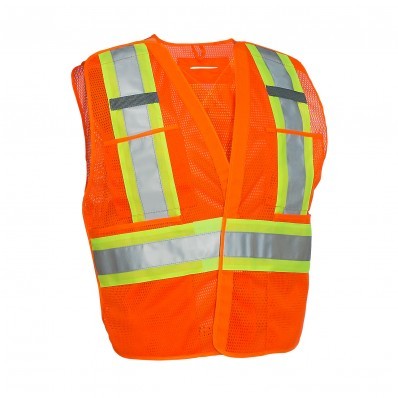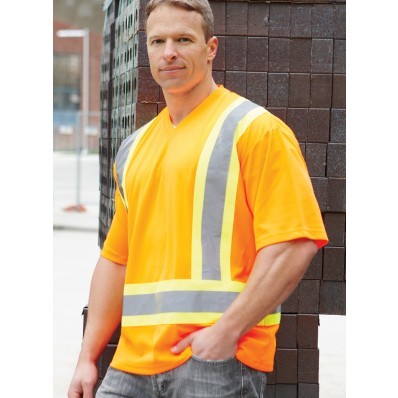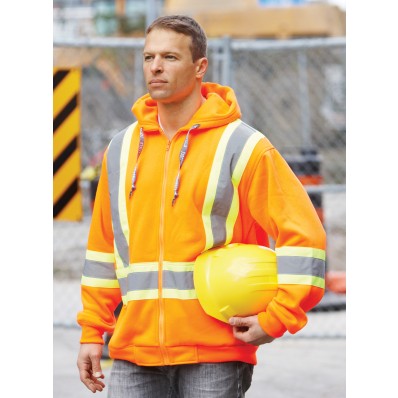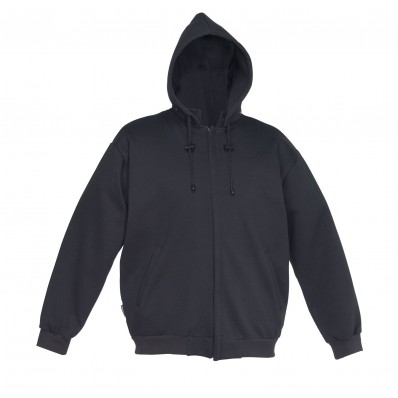On The Job Safety Tips
One of the most important questions to consider on any job site is “how well can others see me”? Wearing the proper high-visibility apparel, color, temperature, flame-resistant and other key aspects of clothing is almost as important as performing the actual job. We put together a few tips on personal protective equipment, so you can get ready for work wearing proper safety apparel.
1.HVSA
Also known as High-Visibility Safety Apparel, these are most effective in low-light or dark conditions. They help you stand out when you would otherwise be obscured.
Not all HVSA are made equal– modern design and production means there are many ways you can tailor your gear to your needs. Look for some of the following features to find your fit:
- Made from fluorescent, retroreflective or combined materials
- 360° coverage around your entire body
- Activity-specific features (ie: flame resistant, thermal, tearaway, etc.)
- Fitted to each wearer, avoid one size fits all products
- CSA Group (Canadian Standards Association) seals and certificates
ForceField Hi-Vis 5-Point Tear-Away Vest
2.Temperature
As those of you who have worked outdoors know, temperatures can vary greatly throughout the year. Most quality manufacturers offer garments made of breathable mesh materials for hot weather, and solid insulated options for cold temperatures. Some offer insulated garments with zip-out insulation and sleeves, so it can be worn in warm weather as well.
Moisture-wicking and anti-odor technologies keep workers cooler and fresher. When selecting these types of products, look for garments with heat-transfer reflective material (instead of reflective that is sewn on) to further increase worker comfort.
ForceField Hi-Vis CSA Short Sleeve V-Neck Shirt
In chilly situations, workers have options like sweatshirts and fleece garments to keep them both visible and warm. Hooded sweatshirts have become a go-to item for the worker who wants to be seen both day and night. Hoodies can be worn alone or under hard hats on cool mornings, and then removed as the day heats up, all the while keeping the worker comfortable and conspicuous.
Coats and jackets provide the greatest level of cold-weather comfort. In addition to keeping workers visible on the job, foul weather gear garments are available with waterproof coatings that keep out moisture. When selecting a waterproof garment, ensure the waterproof coating is also breathable to allow for sweat to escape throughout the workday. Specialized coats and jackets have evolved to the point where one garment may be all a worker needs year-round.
ForceField Hi-Vis Full Zip Polyester Hooded Sweater
Zip-out thermal liners quickly and easily convert warm, winter jackets to non-insulated raincoats and back again. Some thermal liners are also wearable on their own as a lightweight jacket as conditions change.
3.Flame Resistant
Many high-visibility applications may require garments made with flame-resistant materials. Jobs working with or near electrical hazards or oil and gas applications where flash fires could occur are prime examples. Greater burn injuries could occur if individuals wear improper FR garments that continue to burn after the initial hazard has expired. Make certain any garment worn for electrical hazards or flash fire hazards carry the appropriate ratings by performing the proper hazard assessments. Always be sure your apparel meets industry, local, state and federal regulations for your particular application.
ForceField Flame Resistant Hooded Sweatshirt
Recent Posts
-
Canada Day Office Closure
In celebration of Canada Day, our team will be out of office on Tuesday, July 1st. We’ll be av …27th Jun 2025 -
Victoria Day Office Closure
Please be advised that our office will be closed on Monday, May 19th for the Victoria Day holiday. R …16th May 2025 -
Closed for Good Friday – Back Monday, April 21st
Our showroom will be closed Friday, April 18th for Good Friday. We’ll reopen Monday, April 21s …17th Apr 2025







